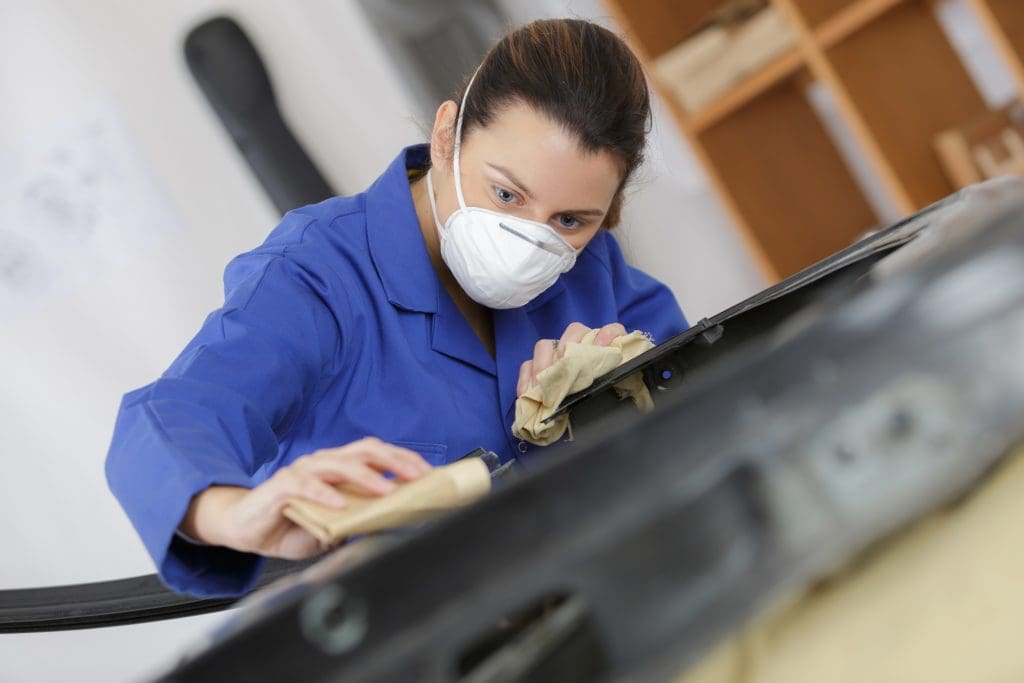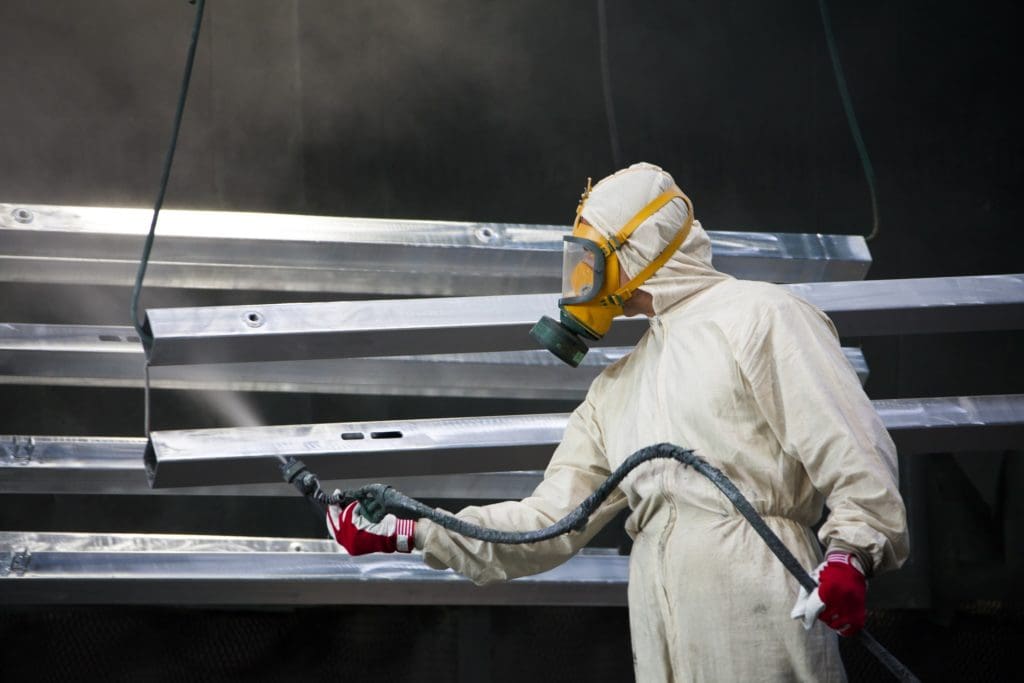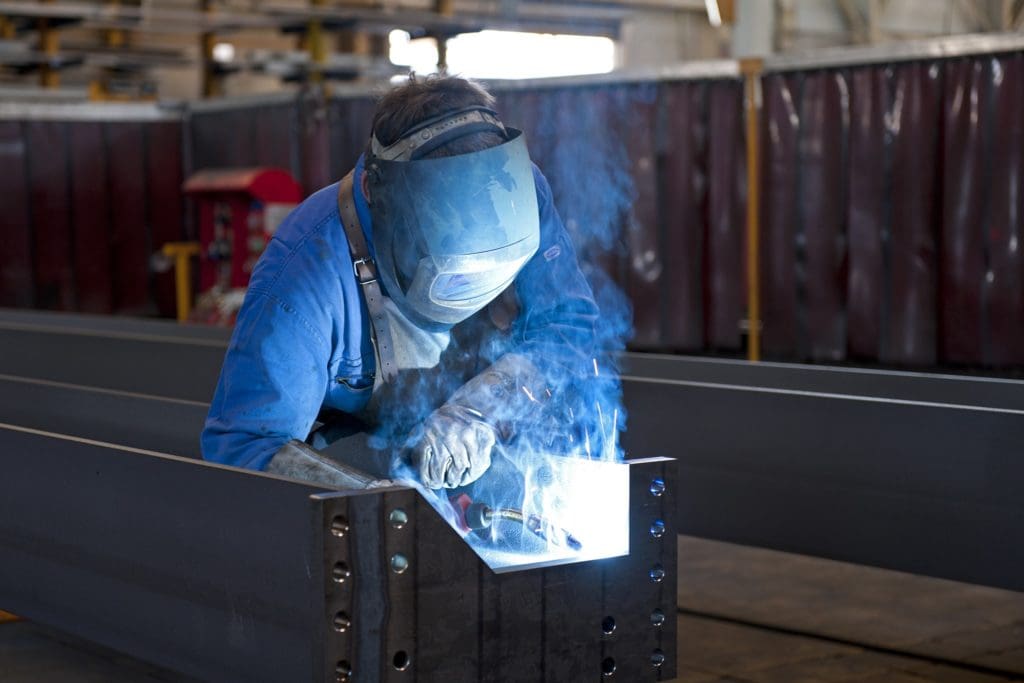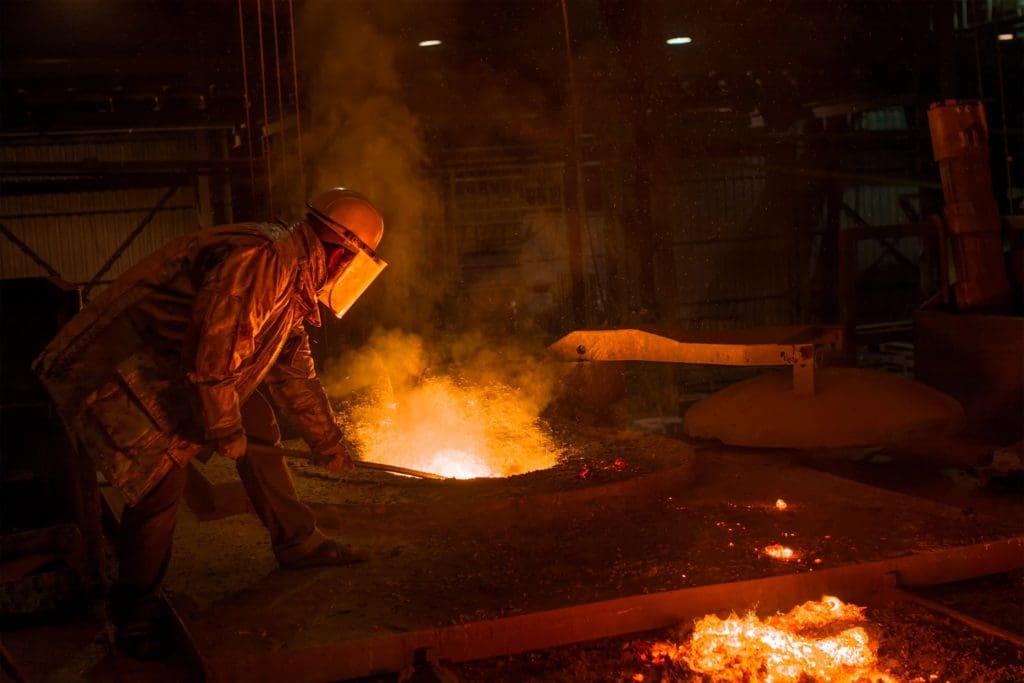Surface coating repair is a dangerous industry. Depending on the materials you are working with and your level of expertise, surface coating jobs pose extreme hazards. The dangers you face on the job may even become life-threatening.
With so many surface coating options available, numerous hazards are present. You need to keep yourself and your team safe during surface coating processes. VRC offers smart options that reduce the risk of injury and keep your team safe from harm on the job.
Each surface coating method comes with unique hazards
There are many different surface coating techniques.
Each method presents its own set of hazards. Whether you are using low-tech paint or innovative thermal spray technology, you’ll need to consider the safety gear and precautions necessary to avoid injury or bodily harm.
OSHA has resources and outlines explaining what precautions you must take.
They also outline your responsibilities as a technician or employer who participates in difficult technical processes. It’s important to follow OSHA guidelines to not only avoid fines but also avoid injury or death.
Painting your surfaces seems like a low-risk, low-tech option.
Surprisingly enough, applying paint as your surface coating poses a few health hazards that you should be aware of.
Dust inhalation during or after surface preparation, toxic fumes, and general exposure to poisonous substances are all potential threats to your health and safety during the painting process.

Before you begin painting, you will need to prep the surface of your part.
Abrasive blasting is a common method to remove old paint from the surface of large machinery and vehicles. When participating in this activity, you’re at risk for toxic dust inhalation, cuts from abrasive blast material, or slips and falls from scaffolding, which is often necessary on these jobs.
Keep yourself safe during the paint prep process.
Always be aware of your surroundings when on the job. Never remove protective eye equipment, face masks, or ear protection. Wear clothing that covers exposed skin to avoid abrasions from material loosened from or rebounding off the surface. Remove debris to ensure safe movement on scaffolding and walking surfaces. The last thing you want is to slip and fall with a sandblaster in your hand.

Paint options can contain toxic fumes.
A well-ventilated painting area and masks are a requirement while surface coating your parts with paint. Risks of toxic fume inhalation include lightheadedness, irritation of eyes, throat, and nose Long term side effects of continued toxic fume inhalation include irreversible lung damage and death.
Surface repairs via welding pose a different set of risks.
Welding is the process that uses high heat to join materials together.
Because it is a high-heat process that involves molten metals you must take special precautions. Welding and other high-heat work need to be performed in a designated area, away from flammable materials.

Personal protection during welding is imperative.
Sparks, fumes, heat, and eye-damaging light are all emitted during the welding process. Electric arc welding also emits intense ultraviolet light that can cause serious sunburns. To protect yourself from these hazards, special equipment is required. Electric shock, burn hazards, and radiation are all present dangers that need to be considered.
Risks of fire and explosions are present when welding.
Any time you’re working with a high-heat process, flame retardant clothing can be the difference between life or death if you make a mistake. No flammable materials should be present in the area. It’s imperative to practice welding safety guidelines and follow requirements employed by OSHA and the American Conference of Governmental Industrial Hygienists.
Are welders more likely to develop illnesses related to their field of work?
According to a Reuter’s study, “people who worked as welders or had exposure to welding fumes were 43 percent more likely to develop lung cancer”. This serious claim can’t be taken lightly. With the correct protective equipment, you can protect your sensitive lungs from hazardous fumes and dust.
High-heat thermal coating processes are also dangerous.
There are a few different thermal coating processes.
Thermal coating processes can be summarized as the action of heating materials particles and depositing them onto a substrate at high velocity. Most of them involve melting the material to be deposited. A few variations of this process exist, including weld cladding, flame spray, arc-wire spray, high-velocity oxygen fuel spraying (HVOF).
The thermal coating process presents certain risks.
- Noise
- Intense light, especially ultraviolet light from electric arc welding
- Metal Fume Fever
- Lung ailments such as cancer, bronchitis, emphysema, or pneumoconiosis from dust and fumes.
- Fire and explosion due to combustible dust and gases.

What is metal fume fever?
Metal fume fever, also known as welding shivers or metal dust fever, is an illness primarily caused by exposure to fumes emitted when certain metals are heated, molten, or vaporized. Symptoms of this illness are similar to those of the flu, and the treatment for mild cases is fairly similar.
Extended exposure to toxic fumes and dust leads to serious health consequences.
Lung cancer, bronchitis, emphysema, and pneumoconiosis are all issues that result from prolonged exposure to hazards from thermal spray coating. Well-fitting ventilators, masks, and regular dust collection can help you and your technical teams avoid these diseases.
You need to recognize fire and explosion hazards.
Thermal coating processes often include the use of high-heat sources for melting particles. Explosion risk is high in the presence of flammable materials during this process. To eliminate the risk of fires and explosions, you must always be aware of your surroundings and keep the shop organized and clean. You need the ability to assess your surroundings for possible fire hazards.
Cold Spray technology is helping the industry overcome these issues.
It offers a safer, less toxic option for surface repair and protection.
The cold spray process employs a high-pressure system to deposit particles at supersonic speeds. These speeds allow the particles to create a durable coating in the solid-state. There is no need for an open flame, arc, or other high-heat sources. Because no melting occurs, cold spray does not emit any molten metal fumes or vapors. Process gases are typically nitrogen or helium, which are inert.
Special innovations in cold spray create a safer surface coating process.
VRC designed their GEN III™ Portable High Pressure Cold Spray System with efficiency and safety in mind. Equipped with sound dampening and dust collection features, your typical surface coating hazards are eliminated. Contact VRC to learn more about how you can use cold spray as a safe alternative for surface coating repair.

